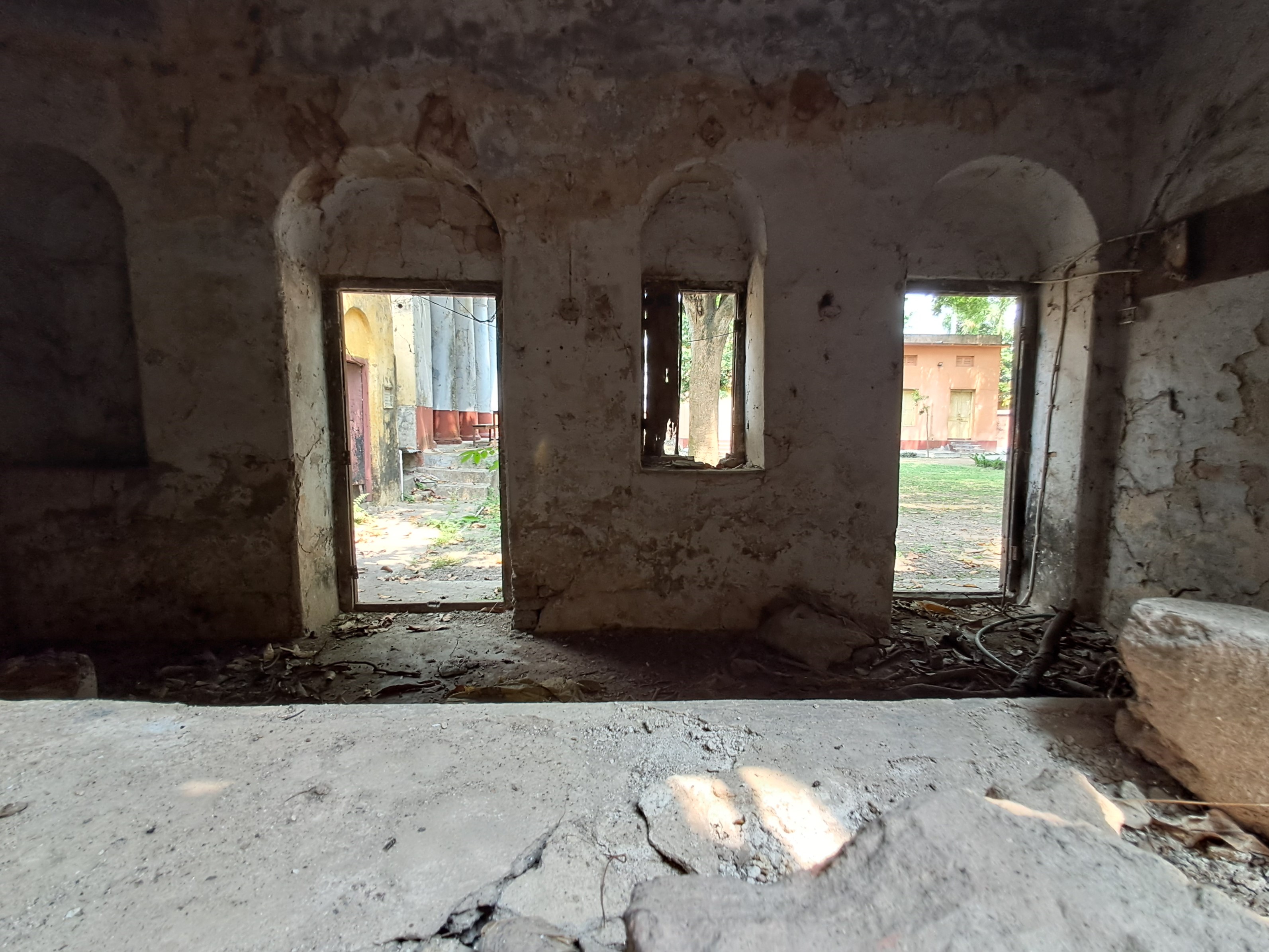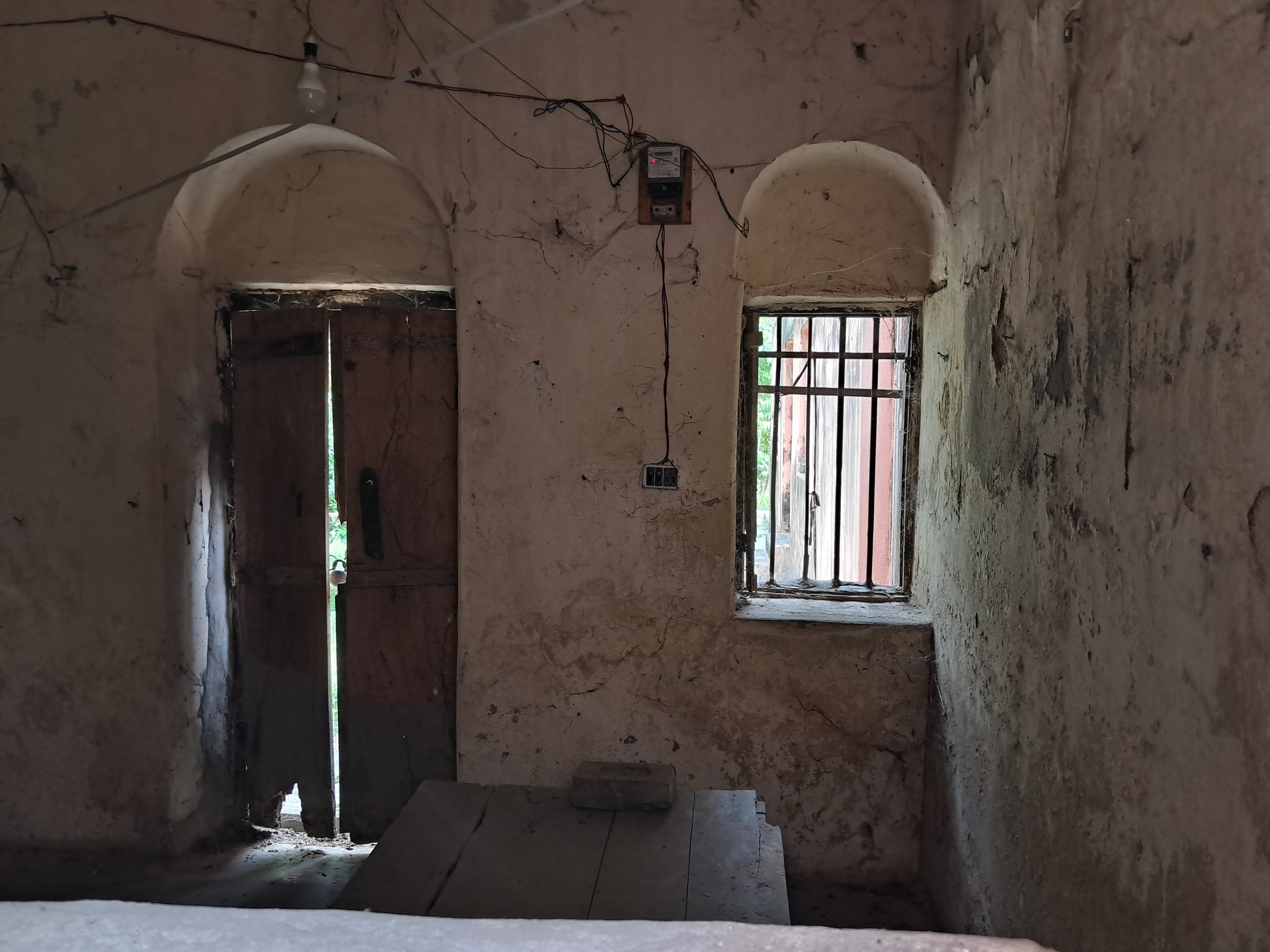The third attempt I present here is owing to the creative thought of Krishnachandra Bhattacharyya. KC Bhattacharyya contends that absence cognitions involve the imagination. A striking passage from Gaṅgeśa is perhaps the best place to start this train of thought1:
If you say that what is meant by absence [of x] is a cognition of a mere locus [say, y] arising upon remembrance of a counterpositive [viz., x], then a cognition of a mere locus such as a man has in darkness, etc. would not be an absence [for there would be nothing to remind him of a counterpositive]. Thus as he walked along, he would be pricked by thorns, for unless he remembered thorns, there could be no absence of thorns. In an uninhabited land if a dam broke the water would not flow out, for there could be no cognition at that moment of a mere locus [there being no cognizer there to have the required cognition]. Furthermore, as soon as one’s cognition of a mere locus was ended, the pot [that was smashed by a hammer] should reappear, for the absence of absence of a pot is a pot [itself].
Gaṅgeśa quickly challenges any requirement of remembrance for absence cognitions. The argument is that if absences involve remembrance, failure of the latter occurring will lead to the failure of the former. The argument relies on the contrapositive of the sentence ‘If there is an absence of x, there is a remembrance of x’. The challenge, however, can be sidestepped by pointing out two things, (i) that memory is not necessarily a part of the cognition and (ii) that the unconscious non-cognition of an absence does not amount to a cognition of presence any more than the unconscious non-cognition of a presence amounts to a cognition of absence. The challenge conflates the cognition of absence with the absence. This is in part by design, for Gaṅgeśa is attacking a purely subjectivist position here. However, we need not throw the baby out with the bath water. There may still be an aspect of subjectivity hidden in the cognition of absence.
KC Bhattacharyya presents a typology of objective facts as tripartite2: present as external, present as internal, and present as absent. Naturally, merely memory, expectation or imagination of an object is not enough to establish knowledge of absence. There is something objectively true about the latter that need not be the case in the former. He gives an even more fine-grained distinction, something that is not prevalent in other attempts that I have elaborated on here: between the cognition of the absence of an object and cognition of an object being absent. The respective examples are a field with a distinct lack of a tree (although not clearly cognized as present in the past) and someone looking for a book in a room and not finding it. The former has the usual locus-qualifier structure. Yet, the qualifier being absence is not quite like any other, say, colour or texture. This distinct character requires the imagination.
Absence is, in Bhattacharyya’s words, ‘a floating adjective that unlike colour is felt to be dissociated from the locus’. After all, seeing the absence of a tree in a field is quite unlike seeing the field as green. We consciously distinguish the tree from its absence and this kind of perception of absence is what he calls imaginative perception. There is yet more to do. In the case of something being absent, as in the case of the example from the previous attempt, the objective circumstance of the subject delineates the object as absent. We are looking for it. We need it, and our instruments of perception are guided by it. I am compelled to reach out for it, yet I do not meet it. This missing is an experience that is interpreted as an object fact of what I have previously called a failure. The contrast between the failure and the imagination of the book as present involves psychic friction. The knowledge which presents the imagination of the book as beyond the realm of objectivity is what he calls imaginative perception.

View of Būnō Rāmnāth’s ṭol’s room from the window
An internet search also revealed the location of the tol of Rāmnāth Tarkasiddhānta, fl. 18th century3. This was immediately after lunch. I had seen Prasanna Tarkaratna’s ṭol and was now headed to this one. Although I could not enter, Būnō Ramnath’s ṭol was the most interesting to explore from the outside. The site does not share any walls with adjacent buildings, and one can walk around it and look as I did through barred windows and closed doors. The tiny lane on one side of the building was fit for only one person to walk through at a time, with a drain running alongside. I walked up to the windows, peered through, and imagined it as a locus of Nyāya. The classrooms were there, so it was easy to imagine what would have been. Rather, to be fair to the actual experience, I must say that the imagination was almost automatic; it was creative yet did not require conscious effort: a sort of imaginative perception. Looking further through the doorways, I could see the field in the middle of the structure. There were stray tables and stools, poised as if they were to be used. Although the place was crumbling and perhaps no longer fit to be actively used as a classroom, it did have LED lights attached and other electrical apparatus. There were many holes (a negative entity!) in the doors, walls and windows inside. The crevices let in light that was bright and showed only hints of the inside, as if the building was hiding its details from my perceptual gaze. What it let me see was interestingly complex. There were traces of repair, modernisation and use, yet by far, the majority of the place was in disrepair. Perhaps this was an intentional choice to keep as much as possible intact without replacing it with a contrary.

View of another room of Būnō Rāmnāth’s ṭol from the window
The imaginative perception then leads to a second sort of experience of absence. The cognition of the absence of the tree transforms into a cognition of the tree as absent, and the cognition of the book as absent into the cognition of the book as absent in the room. This is the full-fledged cognition of absence that we have been describing so far. Bhattacharyya has developed a more detailed phenomenological description which has an intermediary (a bit like Prabhākara).
Though it bears the usual markers of perception, the secondary cognition of the tree is not strictly perception, for it does not involve the object of the tree or the locus but the absence. One must suspend any ontological affirmations of absence here to continue down this line. The line of thought continues to elaborate that since the object of the tree itself has nothing to do with the knowledge, for it is not perceptible at all, it is, in fact, not perception but a distinct mode of presentation called conscious non-perception. Similarly, in the second case, the presentness of the absence of the book is not a concrete thing and is then strictly speaking not perceived. Indeed, it is to mistake the nature of imagination.
When we imagine a Nyāya in an actual locus, say Būnō Rāmnāth’s ṭol. The imagined content, say a lecture being given by a logician, is imagined as being characterised by the actual ṭol. We superimpose the locus onto the imagined content. This is true because, as we have seen, the object as absent is detached from any locus; it is a free floating adjective. Hence, the detachment is fleshed out in imagination by showing how the central focus of the cognition is the content, and the varying qualifier is the locus. Thus, absence cannot be strictly said to be perceived. However, the point of the train of thought that requires bracketing of the ontological nature of absence is a telling place. The strongest evidence we have in favour of this bracketing is the peculiar nature of absence, which does not fit the model of perception like colour or texture do.
As an imaginative leap, a yet distinct possibility is an introspection on the nature of absence when the absent object itself is unknown. Bhattacharyya’s leading example of a bare field is telling, yet there is much more in this case. Consider the situation where you have completed a long project and have to submit a huge pile of papers, with many detailed lists, that forms a complex set with no clear numbering or order. Perhaps you know how many papers there are. You count them and notice that there is one fewer than necessary. Panic sets in. You know you are missing something, yet not what. You perceive an absence in the further search of the papers now that you have grasped that you are missing something. Yet, it is not clear what: an absence without a distinct counterpositive?
There are yet more cases like this. Consider the experience when cooking. You taste the dish you are making, yet it is clear that the dish is missing something. Reflecting on this experience, it is clear that we never have a distinct perception of the absence of something in particular, say salt or pepper or something else entirely. It is only after a little bit of experimentation that we exclaim ‘aha!’ in satisfaction at having found what was missing. Or, say, a sneaky friend steals something small from your table. The table is missing something, yet again, it is not clear what. What is then the source of these uneasy feelings? If we give these experiences the status of valid cognition proper and not merely indistinct perception4, then we require a new typology of absence. It is clear in the case of cooking that it is relieved with expertise, so perhaps it has something to do with habits and other skills. Minimally, pure absences or nothingness and absences of concrete objects in particular loci are not the only distinct possibilities; there is a spectrum in between.
The translation of the Abhāva-vāda chapter of the Tattva-cintā-maṇi in Bimal Krishna Matilal’s The Navya-Nyāya Doctrine of Negation, Harvard University Press (1968) ↩︎
See the chapter, Knowledge of absence as a present fact in Krishna Chandra Bhattacharyya, The Subject As Freedom, GR Malkani, The Institute of Philosophy, Amalner (1930). Also see the enlightening lecture by Jonardon Ganeri, Krishna Chandra Bhattacharyya: Absence, Attention and Subjectivity ↩︎
Kantichandra Rarhi, Nabadwip Mahima, Nabadwip Purvatattva Parishad (2004) ↩︎
It is arguable that what is happening here is merely indistinct perception of an absence where we are wavering between multiple options for what there is an absence of. This would presumably be the Nyāya position. Yet, it is not possible to read this as doubt, for in this case, the list of possible absences is independent. It does not form some mutually exclusive options as in the usual case of doubt like ‘This is either a pole or a man’. However, even if it is attempted to boil it down to a conjunction of possibilities, I believe that the form of the statement is intensionally distinct from such an analysis. ↩︎